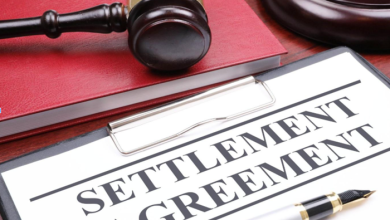
Security is not just a functional requirement in modern logistics and industrial operations; it is a statement of credibility and accountability. Businesses involved in transport, energy distribution, manufacturing, and warehousing rely on trusted safeguards to prevent theft, tampering, and operational discrepancies. High security seals play a silent yet powerful role in building that trust, ensuring that assets remain intact from origin to destination. Before investing in them, decision-makers must weigh crucial elements beyond price and appearance. Understanding how materials, certifications, application methods, and environmental conditions affect long-term reliability can make the difference between true protection and false assurance. Every decision regarding product selection should be approached with long-term operational resilience in mind.
The best choices are made not by rushing to purchase what appears strongest, but by assessing how each seal aligns with industry-specific challenges. A seal that works well in a controlled storage environment may fail miserably in offshore transport. Similarly, a product that is ideal for sealing utility systems may not suit heavy machinery or containerized freight. What matters most is not merely selecting a seal that meets minimum standards, but one that exceeds operational expectations. With thoughtful consideration, a security seal becomes more than a tag; it becomes a verified layer of defense. Let us explore the most important factors that professionals should evaluate before making a purchase.
Assessing Seal Strength and Material Composition
The physical strength of a seal directly determines how resistant it is to intentional abuse, accidental impact, or environmental degradation. High security seals come in a variety of materials, including steel, aluminum, polypropylene, and reinforced plastics. Each material offers unique advantages depending on the application, but choosing without understanding tensile strength ratings can lead to premature failure. Consider whether your cargo or equipment is at risk of cutting tools, prying attempts, or heavy vibration. If so, selecting products with documented break-force data is essential. Never assume that bulk or thickness alone equates to durability.
Environmental compatibility is also part of material consideration. Corrosive atmospheres such as marine shipping lanes can quickly compromise uncoated metals. Likewise, extreme temperatures may cause plastics to become brittle or lose flexibility. Request technical data sheets from your supplier before finalizing an order. Look for information detailing resistance to ultraviolet exposure, chemicals, and moisture retention. A reliable product should withstand not only physical tampering but also long-term environmental fatigue. When in doubt, field testing under real conditions can provide more clarity than brochures.
Choosing the Right Seal Type for Each Application
Not all assets require the same level or style of protection. High security transportation routes, for instance, may rely on cable seals to secure shipping containers or heavy crates. Their flexible yet resistant structure allows them to adapt to irregular locking points while offering strong cutting resistance. However, these may not be suitable for equipment that requires frequent access or removal. Choosing a seal that matches operational workflow ensures efficiency without sacrificing safety. Avoid one-size-fits-all approaches when managing diverse inventories.
Consider how frequently sealed items are opened or inspected. If workers must repeatedly break and replace seals, quick-apply models may be more practical. Adjustable length seals offer versatility for varying closure diameters. Fixed-length options provide tighter control with less opportunity for manipulation. Take into account whether the seal will be used indoors or outdoors, on vehicles or static assets, on valves or access doors. Every scenario has an ideal companion product. Consult installers or field operators to gather practical input before deciding.
Evaluating Compliance and Certification Standards
International standards provide a framework to determine whether a security seal is genuinely tamper-resistant or merely marketed as such. Products used in global logistics often adhere to ISO 17712 classifications, which outline testing requirements for physical performance. Failure to meet such standards could jeopardize regulatory clearance at borders or checkpoints. Depending on your sector, additional certifications may be relevant, such as customs trade partnerships or government-approved supply chain programs. Ask suppliers for verifiable certificates rather than verbal assurances.
Some industries impose far stricter regulations than others. Energy providers dealing with meter seals must adhere to precise calibration protection rules. Laboratory environments may require contamination-free materials. Aviation sectors apply impact and fire safety standards. Ensure that whichever product you select is not merely compatible with your procedures but officially approved for use. If in doubt, contact your compliance team and request a technical compatibility checklist. Taking shortcuts at this stage can cost far more in penalties or delays later.
Considering Tamper Evidence and Breach Visibility
No seal is completely unbreakable, which is why detection matters just as much as resistance. Products designed with clear breach indicators help users quickly determine if access has been attempted. Some models change color or fracture uniquely when forced open. Others use internal mechanisms that reveal stretching or pulling. A tamper seal that leaves no trace of interference is ineffective because silent manipulation is the greatest risk. Seek designs that expose intrusion clearly and irreversibly.
Visibility of tamper cues is critical during routine inspections. If a seal is difficult to assess without tools or magnification, your team may overlook breaches. Brightly contrasting designs help operators scan during field checks. Clear plastic casings with colored inserts can reveal twisting or melting. Integrated locking chambers that disintegrate under stress provide instant warning. Choose products that communicate intent without needing disassembly. Remember that deterrence often begins with the perception of detection.
Balancing Cost Against Long-Term Value
Price should never be the sole deciding factor when choosing protective hardware. While budget constraints are real, selecting cheaper seals that fail easily can lead to losses far exceeding initial savings. Focus instead on lifecycle value, how long the seal can perform without failure, how consistently it prevents unauthorized access, and how easily it integrates with reporting systems. Consider shipping delays, legal liabilities, and reputational damage as hidden costs in procurement decisions. Paying slightly more upfront can prevent far greater future expenses.
Operational efficiency must also be considered. A seal that requires excessive time or strength to install may slow down critical processes. Conversely, one that breaks too easily may lead to frequent replacements and labor waste. It is wise to test different models in the field before committing to a bulk purchase. Compare how they perform across departments and applications. Gather feedback from those who install, remove, or inspect them. High security is not simply a function of resistance; it is the harmony between protection and practicality.
In Conclusion
Investing in high-security seals is not merely a procurement activity but a strategic decision that reinforces integrity across the entire operational flow. Organizations that treat sealing as a formality rather than a defense mechanism expose themselves to vulnerabilities that are easily exploited. Every factor, from material strength to traceability, from compliance to tamper visibility, plays a role in determining whether a seal functions as a deterrent or merely as decoration. Those who thoroughly evaluate their requirements stand to benefit from reduced losses, increased trust, and smoother regulatory interactions. Security sealing is most effective when thought through, not rushed.
The key takeaway is simple, protection is not achieved through chance but through carefully aligned choices. When buyers understand their environment, ask the right questions, and prioritize performance over superficial appearance, their assets remain secure even in high-risk conditions. Whether safeguarding freight, instrumentation, or sensitive enclosures, a well-chosen seal becomes a continuously working sentry that does its job without complaint. In an era where tampering techniques evolve quickly, staying ahead begins with selecting equipment built for resilience. The smartest investments are often the smallest devices with the greatest responsibility.



